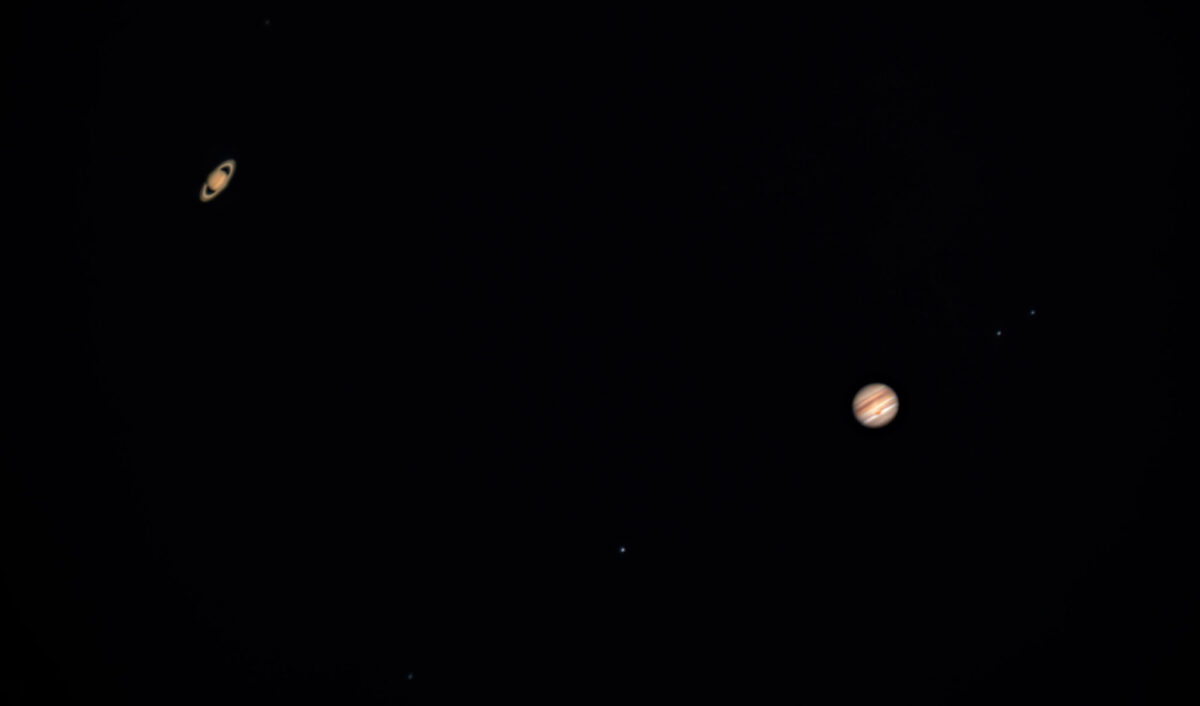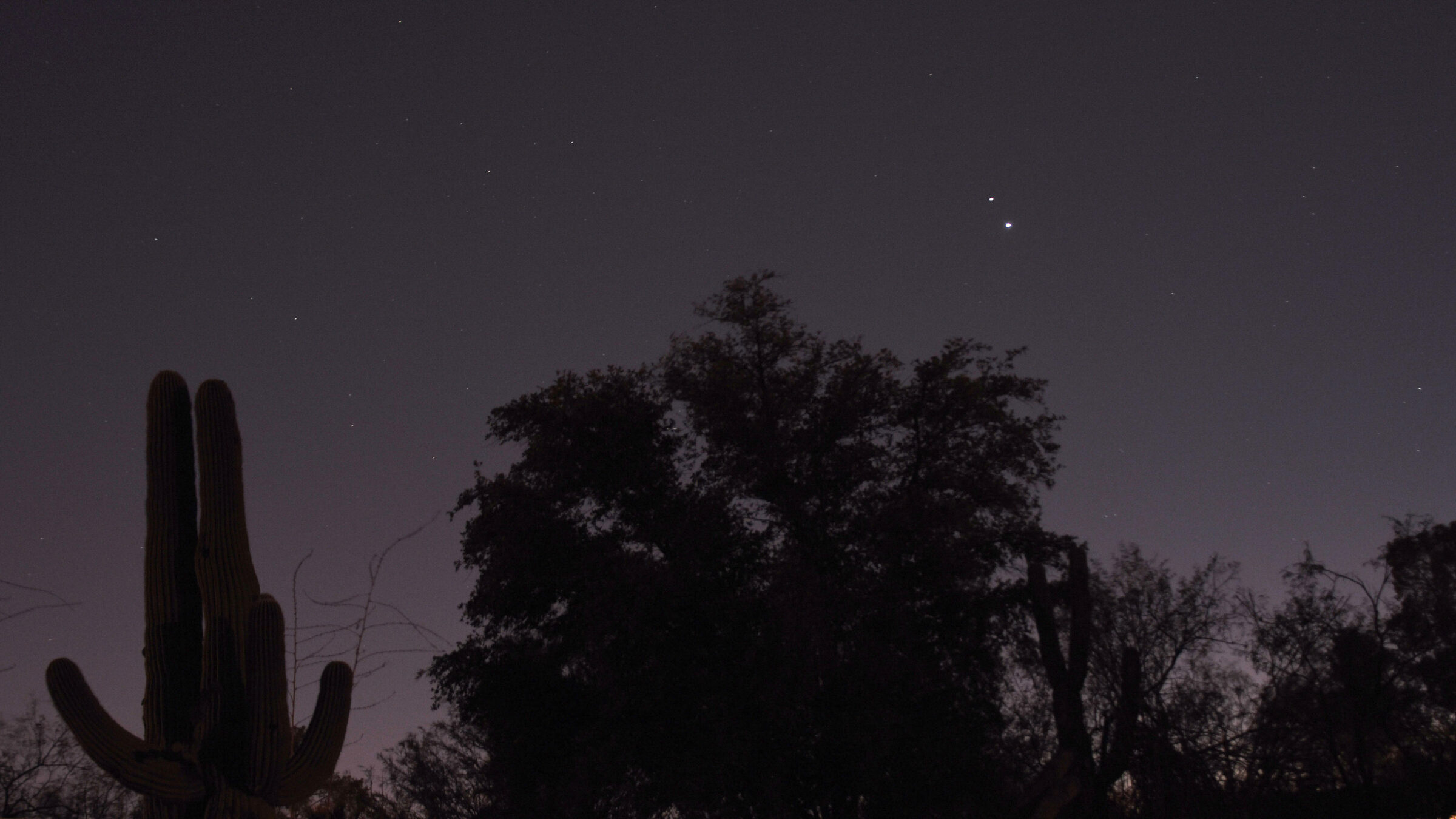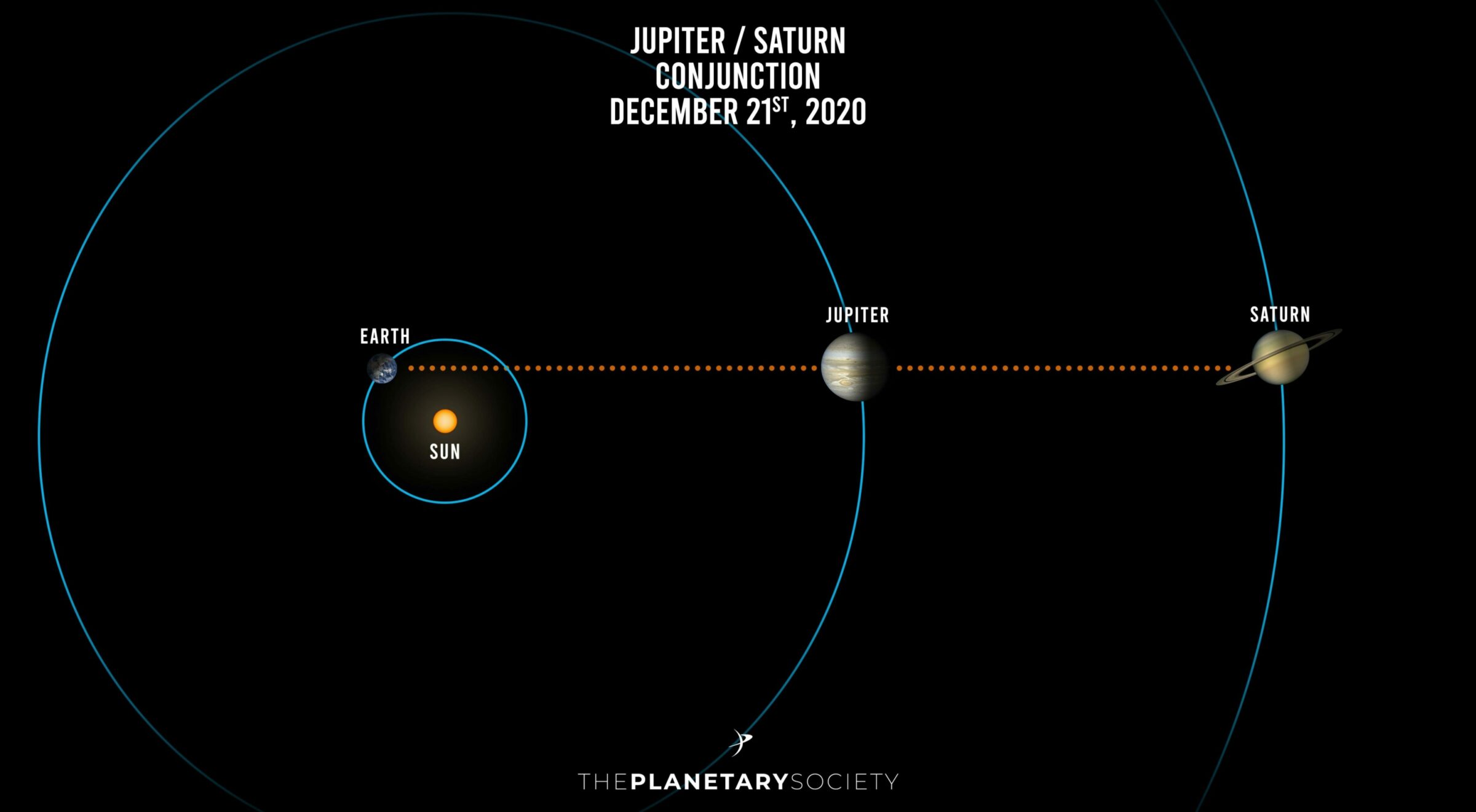Jason Davis • Dec 23, 2020
Jupiter and Saturn Great Conjunction Viewing Guide
Heads-up: Jupiter and Saturn are putting on a once-in-a-lifetime show this December.
The two planets were closer on 21 December than they had been in almost 400 years. With the unaided eye, they almost appeared to touch, separated by less than one-fourth the width of the Moon. They weren’t actually close, of course—Saturn was 733 million kilometers (456 million miles) behind Jupiter. Though the two worlds are now drifting apart each night, they're still putting on a spectacular show that will last through the end of the year.

When two celestial objects come together in the sky, it’s called a conjunction. Jupiter and Saturn conjunctions happen every 20 years. Since they are our solar system’s two biggest worlds and shine particularly bright, their stunning bi-decadal meetup has a special name: a great conjunction.
Like eclipses, conjunctions are one of the easiest ways for
humans to discern the movement of celestial objects. It just so
happened that the great conjunction on 21 December was also the December
Solstice: the shortest day of the year for northern hemispherians and
the longest day of the year for southern hemispherians. The two events
aren't related, but they're a bonus reason to step outside, enjoy the
grandeur of the cosmos, and connect yourself and others to the night sky.
To see the great conjunction, go outside anytime this month shortly after sunset. Look for the two bright dots low in the southwest. Jupiter appears as a bright star, while Saturn is slightly less-bright with a yellow hue. Each day they drifted closer together until 21 December, when they almost appeared to touch. Through binoculars and wide-angle telescopes, you could see both planets at the same time, including Saturn’s rings and some of Jupiter’s moons. After the 21st the planets started drifting apart, and they won’t be this close again until 2080.

Jupiter and Saturn Great Conjunction 2020 Look in the southwest an hour after sunset all December long to watch Jupiter and Saturn get closer each day. They will be just one-fourth the width of the Moon apart on 21 December 2020.Video: The Planetary Society
It takes Jupiter about 12 Earth years to orbit the Sun, while Saturn’s orbit takes about 30 Earth years. As seen from Earth, Jupiter catches up to Saturn about every 20 years. All 3 planets orbit inside the same pizza-shaped plane of our solar system, so these 20-year great conjunctions always bring the planets into a straight line—more or less. Because each planet’s orbit is slightly tilted and non-circular, the closeness of each great conjunction varies. That’s why it has taken 400 years to get the planets this close together, with the next crowded meetup not scheduled until 2080.

Get Involved
With the holidays and new year approaching, now is the perfect time to watch the great conjunction and consider your place in the cosmos. Want to learn more about the night sky, see the conjunction with a telescope or capture it with your camera? Here are some resources to get started:
- Astronomy for beginners
- How to pick the perfect beginner telescope
- Astrophotography for beginners
- Moon features you can see from Earth
Share this guide to help others enjoy this rare celestial event. Want a quick guide to the night sky in your email inbox each week? Sign up for our newsletter, The Downlink! You can also learn what's up each week on our Night Sky page or by listening to our Planetary Radio weekly podcast.
Support our core enterprises
Your support powers our mission to explore worlds, find life, and defend Earth. You make all the difference when you make a gift. Give today!
Donate

 Explore Worlds
Explore Worlds Find Life
Find Life Defend Earth
Defend Earth

